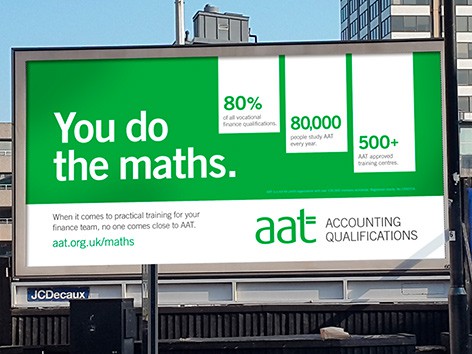September 2021
AAT expert Teresa Clarke explains three mathematical concepts that you really should know about.
It is often assumed that to be an accountant you need to be ‘good at maths’. You don’t need to be a mathematician, but you do need to understand the main concepts including addition, subtraction, multiplication, division, negative numbers, percentages, fractions, ratios, averages and basic formulas. Mental maths is not essential because we use calculators, but you do need to be able to ‘sense-check’ your answers.
I would like to explain three maths concepts where students can struggle: percentages, ratios and fractions.
Percentages
It is important to understand how to calculate percentages. There are many different methods for calculating the percentage of a number, so if your method is different to mine and you get the correct answer, then stick to it.
Remember that there are no wrong methods if they arrive at the correct answers. If you would like a method to calculate percentages try this one.
Percentage basically means per hundred, so a whole number is 100%. To find a percentage of a number we can divide it by 100 to find 1% and then multiply the answer by the percentage required. Let us look at this in an example:
We would like to find 18% of £900.
£900 = 100%
£900 / 100 = £9 Therefore £9 = 1%
Now that we know 1% of £900, we can multiply it by the percentage required:
£9 x 18 = £162 Therefore £162 = 18% of £900
Ratios
A ratio looks like this: 3:2
A task might ask you to share profits of a partnership in the ratio of 3:2.
To calculate this, we first need to look at how many ‘portions’ there are altogether. In this case we have three portions for Partner A and two portions for Partner B, so a total of five portions of profit to share between the two partners.
If the total profit of the partnership is £75,000, we would need to divide this into the five portions first. Then give three portions to Partner A and two portions to Partner B.
£75,000 / five portions = £15,000 per portion.
Partner A gets three portions – £15,000 x 3 = £45,000
Partner B gets two portions – £15,000 x 2 = £30,000
Sense-check your answer by looking at the two shares of the profit. Do they equal the total profit shared? £45,000 plus £30,000 equals £75,000.
Fractions
An exam question might ask you to share the profits of a partnership using fractions such as two-fifths for Partner A and three-fifths for Partner B.
Two-fifths may be written like this ⅖ or like this 2/5.
Three-fifths may be written like this ⅗ or like this 3/5.
The top number is the numerator, and the bottom number is the denominator. But don’t worry, you don’t need to remember those words.
There are different ways of calculating a fraction of a number, and I will show you two here. In the first I will use the fraction and in the second I will convert it to a percentage first.
Example 1:
The profits of a partnership are £85,000.
Partner A is to receive two-fifths and Partner B is to receive three-fifths.
Partner A is to receive two parts of five and Partner B is to receive three parts of five.
We divide the £85,000 by 5 to find one-fifth or 1/5.
£85,000 / 5 = £17,000. This equals onefifth of the profit.
Partner A receives two-fifths, so we multiply this by 2. £17,000 x 2 = £34,000.
Partner B receives three-fifths, so we multiply this by 3. £17,000 x 3 = £51,000.
Sense-check your answer by looking at the two profit shares. £34,000 add £51,000 equals £85,000.
Example 2:
The profits of the partnership are £85,000.
Partner A is to receive two-fifths and Partner B is to receive three-fifths.
We can convert the two fractions into percentages by dividing the top number by the bottom number and then multiplying the answer by 100.
Note: You can do this for any fraction if you want to convert it into a percentage.
2/5 2 divided by 5 = 0.4 x 100 = 40%
3/5 3 divided by 5 = 0.6 x 100 = 60%
Partner A is to receive 40% of the profits and Partner B is to receive 60% of the profits.
£85,000 x 40% = £34,000
£85,000 x 60% = £51,000
Sense-check this answer by adding together the two profit shares of £34,000 and £51,000.
You will also see that the two example methods shown gave the same answers.
If you would like more Maths for Accountants, you might like my workbook.
Here is the link: https://www.amazon.co.uk/dp/B091FZ46YC
• Teresa Clarke FMAA




